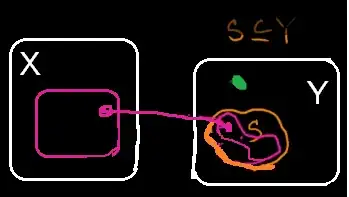I haven't been able to do this exercise:
Let $f: A \rightarrow B$ be any function. $f^{-1}(X)$ is the inverse image of $X$. Demonstrate that if $f$ is surjective then $X = f(f^{-1}(X))$ where $X \subseteq B$.
Since $X \subseteq B$, all the elements in $X$ belong to the codomain of $f$.
Since $f$ is surjective, it means that all elements in the codomain $B$ have some preimage in $A$. Given that $X \subseteq B$, all elements in $X$ must also have a preimage in $A$.
Have $\triangle = f^{-1}(X)$, $\triangle$ is now a set containing the preimages of the elements in $X$. Because of this, $\triangle \subseteq A$.
If we evaluate $f(\triangle)$, we...... nope, I don't know what I'm doing now.
What do you think?
